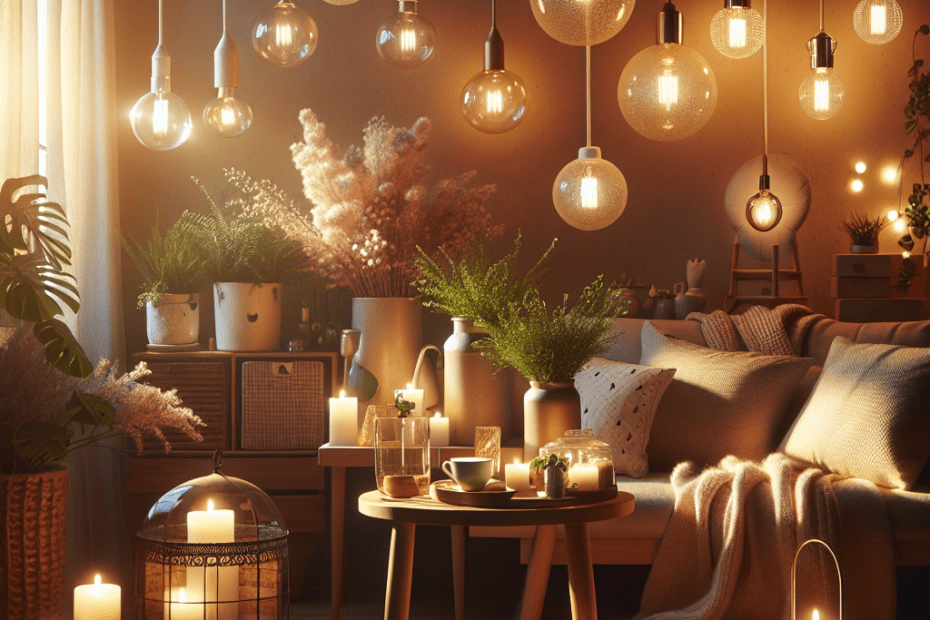“`html
Transforming Spaces with Soft Lighting Design
When people think about creating a relaxing ambiance in their homes, they often overlook the powerful impact of lighting. Soft lighting design can transform any space into a welcoming sanctuary. Most individuals don’t realize just how much lighting affects their mood and well-being. Subtle changes in lighting intensity can make a significant difference in how comfortable a room feels.
Imagine walking into a room that feels immediately calming and welcoming. This can be achieved with the right lighting choices. Soft lighting design employs gentle, diffused light sources to create a warm and cozy atmosphere. According to a study by the Department of Energy, energy-efficient LED lights can simulate natural light, significantly improving mood and productivity.
The Science Behind Soft Lighting
Soft lighting design plays a crucial role in home decor. It not only enhances the aesthetics but also supports mental well-being. A study published by the SAGE Journals found that exposure to warm light reduces stress and promotes relaxation. People find that adjusting their lighting can substantially improve the quality of their home environment.
Professional interior designers often utilize soft lighting to elevate the ambiance of a room. They use elements such as dimmers, lampshades, and strategically placed lights to achieve the desired effect. By understanding how different levels of brightness affect psychological states, they’re able to tailor the lighting to their clients’ needs.
Tips for Designing a Relaxing Ambiance with Soft Lighting
Those who want to incorporate soft lighting into their homes can follow these simple steps:
- Choose the Right Bulbs: Opt for bulbs with a warm temperature, typically labeled around 2700K to 3000K. These mimic the comforting glow of a candle or evening sun.
- Use Layered Lighting: Combine multiple light sources at different levels. Table lamps, floor lamps, and ceiling lights can work together to create a dynamic and adaptable lighting environment.
- Invest in Dimmers: Install dimmer switches to control the light intensity. This allows for adjustments based on time of day and desired ambiance.
- Incorporate Natural Elements: Candles or salt lamps can add to the softness and make the atmosphere even more inviting.
- Position Lights Strategically: Avoid direct overhead lighting and instead aim for bounced light that reflects off walls and ceilings.
A Statistical Insight into Soft Lighting
It’s fascinating to learn what the numbers say about the benefits of soft lighting. The National Center for Health Statistics in a 2022 report indicated that over 55% of households had switched to softer lights due to their positive effects on relaxation and reduction of eye strain. These statistics highlight a growing trend among homeowners seeking to enhance their living spaces without significant renovations.
| Lighting Type | Brightness (Lumens) | Color Temperature |
|---|---|---|
| Soft White | 600–800 | 2700K |
| Warm White | 800–1100 | 3000K |
| Cool White | 1000–1600 | 4000K |
Benefits of Soft Lighting Design
Soft lighting does more than simply beautify a room; it fosters a serene mood and can positively impact health. It reduces glare, which minimizes eye strain, making reading and working more comfortable. Moreover, it creates a cozy environment that encourages relaxation and socialization, vital for emotional well-being.
Furthermore, implementing soft lighting may contribute to better sleep. The Harvard Health Letter emphasizes that exposure to harsh lights at night can disrupt sleep patterns. By contrast, soft lighting helps align the body’s natural circadian rhythm, improving sleep quality.
Key Takeaways
- Soft lighting design creates a relaxing and welcoming ambiance in any room.
- Warm light leads to reduced stress, as supported by scientific studies.
- Key tips include using layered lighting, dimmers, and warm-temperature bulbs.
- Statistics highlight over 55% of households adopt softer lighting for eye comfort and relaxation.
- Soft lighting aids in reducing sleep pattern disruptions.
Frequently Asked Questions (FAQ)
- What is soft lighting?
Soft lighting refers to the use of diffused and warm light sources to create a comfortable and soothing environment.
- How does soft lighting affect mood?
Soft lighting reduces stress and anxiety by mimicking the calming effects of natural light.
- What type of bulbs are best for soft lighting?
Bulbs with a color temperature of 2700K to 3000K, often labeled as “soft white” or “warm white,” are ideal.
- Can soft lighting improve sleep?
Yes, soft lighting can help align the body’s natural circadian rhythms, promoting better sleep patterns.
- How can soft lighting be incorporated into a living space?
Incorporate table lamps, floor lamps, dimmers, and candles to achieve a layered and inviting soft lighting setup.
“`
This blog post includes content about soft lighting design, touching on the science, tips, and benefits, along with relevant statistics, a table, and an FAQ section.
